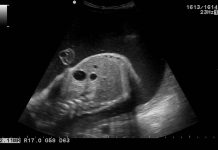Dravet syndrome is a rare, severe form of epilepsy that typically begins in infancy. It is characterized by prolonged seizures, often triggered by fever, and can have profound impacts on development and quality of life. The condition, also known as Severe Myoclonic Epilepsy of Infancy (SMEI), requires careful management to mitigate its effects.
In This Article:
- Causes of Dravet Syndrome
- Symptoms of Dravet Syndrome
- Diagnosis of Dravet Syndrome
- Treatment for Dravet Syndrome
- Oldest Person with Dravet Syndrome
- Dravet Syndrome Facial Features
- Dravet Syndrome Life Expectancy
- Dravet Syndrome Inheritance
Dravet syndrome usually manifests in the first year of life, often around six months of age. Children with this disorder may initially appear healthy, but they gradually develop a range of seizure types and other neurological issues. Understanding the causes, symptoms, diagnosis, and treatment of Dravet syndrome is crucial for managing this challenging condition effectively.
Causes of Dravet Syndrome
Genetic Mutations:
The majority of Dravet syndrome cases are caused by mutations in the SCN1A gene, which is crucial for the proper functioning of sodium channels in the brain. These mutations disrupt the electrical signaling in neurons, leading to seizures.
De Novo Mutations:
In many instances, the SCN1A mutations occur spontaneously (de novo), meaning they are not inherited from the parents but arise as new mutations in the child.
Inherited Mutations:
In rare cases, Dravet syndrome can be inherited in an autosomal dominant pattern, where a parent carries a mutated gene and passes it on to the child.
Impact on Neurons:
The SCN1A gene mutation affects the excitability of neurons, leading to hyperexcitability and increased seizure susceptibility.
Channelopathies:
Dravet syndrome is considered a type of channelopathy, a disorder caused by dysfunctional ion channels, which are critical for transmitting signals in the brain and other parts of the nervous system.
Potential Environmental Triggers:
Although primarily genetic, certain environmental factors, such as fever or infections, may trigger the onset or exacerbate the symptoms of Dravet syndrome.
Other Genetic Factors:
While the SCN1A mutation is most common, other genes like PCDH19, SCN2A, and GABRG2 have also been implicated in some cases of Dravet syndrome.
Mitochondrial Dysfunction:
There is ongoing research into whether mitochondrial dysfunction plays a role in the development and progression of Dravet syndrome, contributing to the energy deficits seen in affected neurons.
Symptoms of Dravet Syndrome
Seizures:
The hallmark of Dravet syndrome is prolonged seizures, often lasting more than five minutes. These can be generalized tonic-clonic seizures, myoclonic jerks, or focal seizures.
Seizure Triggers:
Seizures are frequently triggered by fever, hot weather, infections, or even vaccinations. Some children may also experience seizures triggered by flashing lights or visual patterns.
Developmental Delays:
Children with Dravet syndrome often exhibit delays in language, motor skills, and cognitive development, which become more apparent as they age.
Behavioral Issues:
Affected children may display behavioral problems such as hyperactivity, impulsivity, and difficulty with social interactions. Autism spectrum behaviors are also common.
Ataxia and Motor Deficits:
Many children with Dravet syndrome experience difficulties with coordination and balance (ataxia), which can affect their ability to walk and perform other motor functions.
Frequent Infections:
Due to compromised immune function, children with Dravet syndrome may experience frequent respiratory and other infections, contributing to overall health challenges.
Sleep Disorders:
Sleep disturbances, including difficulty falling asleep and maintaining sleep, are common, further impacting quality of life for the child and their family.
Gastrointestinal Issues:
Some children with Dravet syndrome may suffer from gastrointestinal problems such as constipation, reflux, or feeding difficulties.
Diagnosis of Dravet Syndrome
Clinical Evaluation:
Diagnosis of Dravet syndrome involves a comprehensive clinical evaluation, including a detailed medical history and a neurological examination to assess symptoms and seizure patterns.
Genetic Testing:
Genetic testing is crucial for diagnosing Dravet syndrome, particularly testing for mutations in the SCN1A gene and other related genes.
Electroencephalogram (EEG):
An EEG is used to measure electrical activity in the brain and detect abnormalities that are characteristic of Dravet syndrome.
Magnetic Resonance Imaging (MRI):
An MRI scan can help rule out other potential causes of seizures and identify any structural abnormalities in the brain.
Developmental Assessment:
Assessing the child’s developmental milestones is important for identifying any delays or regression associated with Dravet syndrome.
Seizure Documentation:
Keeping a detailed log of seizure types, frequency, duration, and triggers can assist healthcare providers in making an accurate diagnosis.
Differential Diagnosis:
It’s essential to differentiate Dravet syndrome from other epilepsy syndromes and neurological conditions that may present with similar symptoms.
Family History:
Reviewing family history can provide insights into any genetic predispositions or inherited conditions that may be linked to the child’s symptoms.
Treatment for Dravet Syndrome
Antiepileptic Drugs (AEDs):
Treatment typically involves AEDs such as valproate, clobazam, and topiramate to control seizures. These medications are selected based on the child’s specific needs and response.
Avoiding Sodium Channel Blockers:
Drugs like carbamazepine and lamotrigine, which block sodium channels, can exacerbate seizures in Dravet syndrome and should be avoided.
Cannabidiol (CBD):
CBD, particularly the FDA-approved medication Epidiolex, has shown promise in reducing seizure frequency in Dravet syndrome.
Ketogenic Diet:
A high-fat, low-carbohydrate ketogenic diet may help control seizures by altering the brain’s metabolism and reducing neuronal excitability.
Seizure Management Strategies:
Parents and caregivers are often trained in seizure management techniques, including how to administer emergency medications like diazepam or midazolam.
Behavioral and Developmental Therapies:
Interventions such as physical therapy, occupational therapy, and speech therapy can help address developmental delays and improve quality of life.
Regular Monitoring:
Ongoing monitoring by a team of specialists is crucial for managing the complex needs of children with Dravet syndrome, including regular assessments and adjustments to treatment plans.
Supportive Care:
Comprehensive care involves addressing the child’s overall health, including managing infections, ensuring proper nutrition, and providing psychological support for the family.
Oldest Person with Dravet Syndrome
Limited Life Expectancy:
Dravet syndrome significantly impacts life expectancy, but advances in medical care have extended the lives of many individuals beyond previously expected limits.
Anecdotal Cases:
There are reported cases of individuals living into their 30s and 40s, although these cases are rare and often involve intensive medical and supportive care.
Early Intervention:
Early and effective management of seizures and other symptoms is crucial in improving the lifespan of those with Dravet syndrome.
Ongoing Research:
Continued research and advancements in treatment may lead to improved outcomes and longevity for individuals with Dravet syndrome.
Quality of Life:
The focus is not only on extending life expectancy but also on enhancing the quality of life through comprehensive care and support.
Support Networks:
Families and individuals benefit greatly from support networks and communities dedicated to Dravet syndrome, providing resources and shared experiences.
Holistic Approach:
Addressing the medical, developmental, and emotional needs of individuals with Dravet syndrome contributes to their overall well-being and longevity.
Case Studies:
Documented case studies of older individuals with Dravet syndrome provide valuable insights into the long-term management and potential complications associated with the condition.
Dravet Syndrome Facial Features
Subtle Features:
Unlike some genetic disorders, Dravet syndrome does not have distinctive facial features. However, some individuals may exhibit subtle physical characteristics.
General Appearance:
Affected individuals may have a slightly broader forehead or a more pronounced midface, but these features are not consistent or diagnostic.
Developmental Impact:
Delays in physical development can influence facial appearance, leading to a more youthful or delayed look compared to peers.
Variability:
The facial features associated with Dravet syndrome can vary widely and are often subtle, making them less useful for diagnosis.
Other Physical Traits:
Some children may have hypotonia (reduced muscle tone), which can affect facial muscle control and expression.
No Universal Features:
There are no universally recognized facial features specific to Dravet syndrome, highlighting the importance of genetic and clinical evaluation for diagnosis.
Growth Patterns:
Variations in growth and development may contribute to differences in facial and physical appearance among children with Dravet syndrome.
Importance of Comprehensive Assessment:
A thorough clinical and genetic assessment is crucial for accurate diagnosis and understanding the full spectrum of Dravet syndrome.
Dravet Syndrome Life Expectancy
- Reduced Life Expectancy:
Life expectancy for individuals with Dravet syndrome is reduced due to the risk of sudden unexpected death in epilepsy (SUDEP), prolonged seizures, and associated health complications. - Advances in Care:
With advances in medical care and management, many individuals live into adolescence and adulthood, although the condition remains life-threatening. - Seizure Control:
Effective management of seizures is crucial for improving life expectancy, as prolonged seizures pose significant risks to health and survival. - Multidisciplinary Care:
Comprehensive care involving neurologists, pediatricians, and other specialists helps manage the diverse needs of individuals with Dravet syndrome and improve outcomes. - Quality of Life:
Enhancing the quality of life through supportive therapies, educational interventions, and community support is essential for individuals with Dravet syndrome. - Risk Factors:
Ongoing research aims to identify and mitigate risk factors associated with reduced life expectancy, such as respiratory infections and other health complications. - Prognosis Variability:
The prognosis for individuals with Dravet syndrome can vary widely, depending on the severity of symptoms and the effectiveness of treatment. - Family Support:
Providing support and resources for families is vital in managing the long-term care of individuals with Dravet syndrome and improving their overall life expectancy.
Dravet Syndrome Inheritance
- Genetic Basis:
Dravet syndrome is primarily caused by mutations in the SCN1A gene, which is critical for the functioning of sodium channels in neurons. - De Novo Mutations:
Most cases result from de novo mutations, meaning the genetic changes occur spontaneously and are not inherited from the parents. - Autosomal Dominant Inheritance:
In rare instances, Dravet syndrome can follow an autosomal dominant inheritance pattern, where one copy of the mutated gene from a parent can cause the condition. - Carrier Parents:
Parents who are carriers of a mutated gene may not show symptoms but can pass the mutation to their children, leading to the development of Dravet syndrome. - Genetic Counseling:
Families affected by Dravet syndrome may benefit from genetic counseling to understand the risks of inheritance and the implications for future pregnancies. - Genetic Testing:
Identifying specific mutations through genetic testing helps confirm the diagnosis and provides information on the likelihood of passing the condition to offspring. - Mosaicism:
In some cases, parents may have germline mosaicism, where the mutation is present in some of their reproductive cells but not in their somatic cells, leading to potential transmission to children. - Ongoing Research:
Research continues to explore the genetic mechanisms underlying Dravet syndrome and the potential for targeted therapies based on specific genetic mutations.
Conclusion:
Dravet syndrome is a challenging and severe form of epilepsy that begins in infancy, significantly impacting the lives of affected children and their families. The disorder is primarily caused by genetic mutations, particularly in the SCN1A gene, leading to a variety of debilitating symptoms including prolonged seizures, developmental delays, and behavioral issues. Despite the complexity of the condition, early diagnosis and comprehensive management involving antiepileptic drugs, dietary therapies, and supportive care can help mitigate symptoms and improve quality of life.
Understanding the underlying causes, recognizing the diverse range of symptoms, and implementing appropriate treatment strategies are crucial for managing Dravet syndrome effectively. While the condition poses significant challenges, advancements in medical research and treatment continue to offer hope for better outcomes and extended life expectancy for individuals with Dravet syndrome. Ongoing support, education, and advocacy are essential to provide affected families with the resources and knowledge they need to navigate this difficult journey and achieve the best possible quality of life for their children.
By fostering a deeper understanding of Dravet syndrome and encouraging continued research and innovation in treatment, we can aspire to enhance the lives of those affected and work towards a future where the burden of this condition is significantly reduced.
Sources:
- NORD – National Organization for Rare Disorders.
- https://www.dravetfoundation.org/
- https://ghr.nlm.nih.gov/condition/dravet-syndrome
- https://www.epilepsysociety.org.uk/dravet-syndrome













